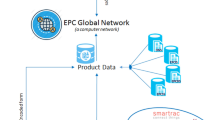Abstract
The blockchain technology emerged in 2008 as a distributed peer to peer network structure, capable of ensuring security for transactions made using the Bitcoin digital currency, without the need for third party intermediaries to validate them. Although its beginning was linked to cryptocurrencies, its use has diversified over the recent years. There are various projects using the blockchain technology to perform document validation, electronic voting, tokenization of non-perishable goods, and many others. With its increasing use, concern arises with possible attacks that could threaten the integrity of the consensus of the chain. One of the well-known attacks to the blockchain consensus mechanism is the selfish mining attack, in which malicious nodes can deflect their behavior from the standard pattern by not immediately disclosing their newly mined blocks. This malicious behavior can result in a disproportionate share of rewards for those nodes, especially if they have a significant processing power. The goal of this paper is to present a simple heuristic to detect the presence of selfish mining attack (and variants) in blockchain networks that use the proof-of-work (PoW) consensus algorithm. The proposal is to signal when the blockchain fork height deviates from the standard, indicating when the network is under the influence of such attacks.











Similar content being viewed by others
Notes
Difficulty is based on a partial hash collision. The mechanism used to generate the collision is based on varying the nonce field of the block header. As it is a header field, the miner will change it until reaching the partial collision. When the difficulty is set to 1-bit (zero), it is sufficient to find a hash that starts with a zero and any value for the other 255 bits, i.e., 2255 possibilities will be considered valid. If the difficulty is set to 2 bits the possibilities will be reduced to 2254 and so on.
Blocks which were successfully mined but which were not included in the current best blockchain, likely because some other block at the same height had its chain extended first.
Rare and temporary situation
References
Nakamoto S (2008) Bitcoin: A peer-to-peer electronic cash system. https://bitcoin.org/bitcoin.pdf
Hill B, Chopra S, Valencourt P (2018) Blockchain quick reference: a guide to exploring decentralized blockchain application development. Packt Publishing Ltd
Antonopoulos A (2014) Mastering Bitcoin: unlocking digital cryptocurrencies. O’Reilly Media Inc.
Chicarino V, Jesus EF, Albuquerque C, Rocha A (2019) A heuristic for the detection of selfish miner and stalker attacks in blockchains networks. In: IEEE Blockchain, Robotics and AI for Networking Security Conference, 2019, Rio de Janeiro. BRAINS, IEEE, pp 1–6
Jesus EF, Chicarino V, Albuquerque C, Rocha A (2018) A survey of how to use blockchain to secure internet of things and the stalker attack. Security and Communication Networks, 2018
King S, Nadal S Ppcoin: Peer-to-peer crypto-currency with proof-of-stake. self-published paper. August 19 2012
Castro M, Liskov B (2002) Practical byzantine fault tolerance and proactive recovery. ACM Trans Comput Syst (TOCS) 20(4):398–461
Chen L, Lei X, Shah N, Gao Z, Yang L, Shi W (2017) On security analysis of proof-of-elapsed-time (poet). In: International Symposium on Stabilization, Safety, and Security of Distributed Systems, Springer, pp 282–297
Back A et al (2002) Hashcash-a denial of service counter-measure
Gilbert H, Handschuh H (2003) Security analysis of sha-256 and sisters. In: International Workshop on Selected Areas in Cryptography, Springer, pp 175–193
Decker C, Wattenhofer R (2013) Information propagation in the bitcoin network. In: 2013 IEEE Thirteenth International Conference on Peer-to-peer Computing (p2p), IEEE, pp 1–10
Gervais A, Karame GO, Wüst K, Glykantzis V, Ritzdorf H, Capkun S (2016) On the security and performance of proof of work blockchains. In: Proceedings of the 2016 ACM SIGSAC Conference on Computer and Communications security - CCS’16
Eyal I, Sirer EG (2014) Majority is not enough Bitcoin mining is vulnerable. In: International Conference on Financial Cryptography and Data Security, Springer, pp 436–454
Nayak K, Kumar S, Miller A, Shi E (2016) Stubborn mining: generalizing selfish mining and combining with an eclipse attack. In: 2016 IEEE European Symposium on Security and Privacy (euros&p), IEEE, pp 305–320
Heilman E, Kendler A, Zohar A, Goldberg S (2015) Eclipse attacks on bitcoin’s peer-to-peer network. In: USENIX Security, pp 129–144
Sokolova M, Japkowicz N, Szpakowicz S (2006) Beyond accuracy, f-score and roc: a family of discriminant measures for performance evaluation. In: Australasian Joint Conference on Artificial Intelligence, Springer, pp 1015–1021
Bahack L (2013) Theoretical bitcoin attacks with less than half of the computational power (draft). arXiv:1312.7013
Sapirshtein A, Sompolinsky Y, Zohar A (2016) Optimal selfish mining strategies in bitcoin. In: International Conference on Financial Cryptography and Data Security, Springer, pp 515–532
Heilman E (2014) One weird trick to stop selfish miners: Fresh bitcoins, a solution for the honest miner. In: International Conference on Financial Cryptography and Data Security, Springer, pp 161–162
Solat S, Potop-Butucaru M (2016) Zeroblock: timestamp-free prevention of block-withholding attack in bitcoin. arXiv:1605.02435
Zhang R, Preneel B (2017) Publish or perish: a backward-compatible defense against selfish mining in bitcoin. In: Cryptographers’ Track at the RSA Conference, Springer, pp 277– 292
Oliveira M, Carrara G, Fernandes N, Albuquerque C, Carrano R, Medeiros D, Mattos D (2019) Towards a performance evaluation of private blockchain frameworks using a realistic workload. In: 2019 22Nd Conference on Innovation in Clouds, Internet and Networks and Workshops (ICIN), IEEE, pp 180–187
Funding
This work has been supported in part by, CNPq, Capes, Faperj and Fapesp Grant 2015/24358-7.
Author information
Authors and Affiliations
Corresponding authors
Ethics declarations
Conflict of interests
The authors declare that they have no conflict of interest.
Additional information
Publisher’s note
Springer Nature remains neutral with regard to jurisdictional claims in published maps and institutional affiliations.
Rights and permissions
About this article
Cite this article
Chicarino, V., Albuquerque, C., Jesus, E. et al. On the detection of selfish mining and stalker attacks in blockchain networks. Ann. Telecommun. 75, 143–152 (2020). https://doi.org/10.1007/s12243-019-00746-2
Received:
Accepted:
Published:
Issue Date:
DOI: https://doi.org/10.1007/s12243-019-00746-2




